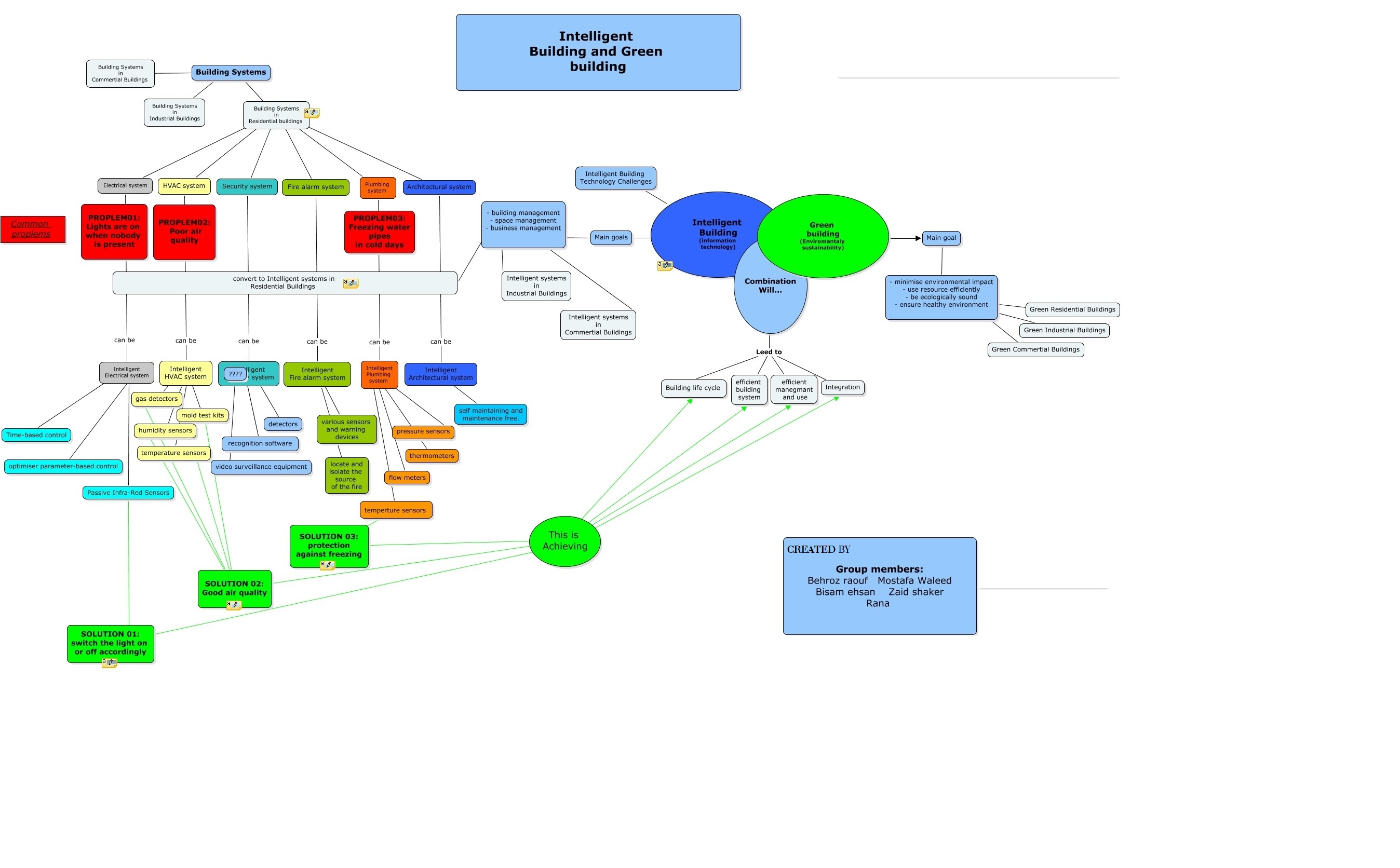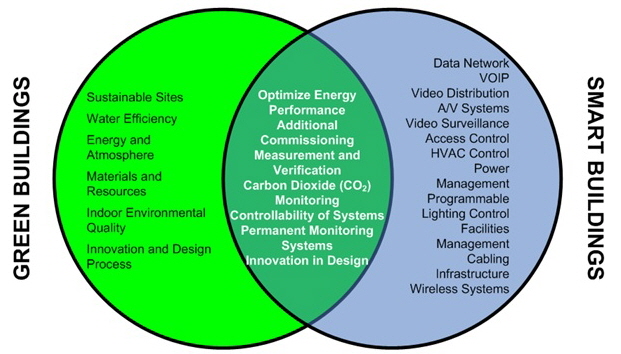ENERGY EFFICIENCY & TECHNOLOGIES

INTELLIGENT BUILDING
Intelligent buildings aim to provide a seamless and efficient experience for occupants while promoting sustainability and cost savings. The integration of smart technologies continues to evolve, and ongoing advancements contribute to the development of even more sophisticated and interconnected building systems.
INTELLIGENT BUILDING
Intelligent building also known as a smart building, incorporates advanced technology and communication systems to enhance the building's functionality, efficiency, and overall performance. The primary goal is to create a more comfortable, secure, and energy-efficient environment for occupants. Here are some key aspects and features associated with intelligent buildings:
Building Management Systems (BMS): These systems monitor and control various building functions, such as lighting, HVAC (heating, ventilation, and air conditioning), security, and energy management.
Home Automation: In residential buildings, smart home technologies allow residents to control various aspects of their living spaces, such as lighting, temperature, and security, through connected devices.
Smart Lighting: Energy-efficient lighting systems with sensors and controls that adjust based on natural light levels and occupancy.
HVAC Optimization: Intelligent climate control systems that adjust heating and cooling based on occupancy, weather conditions, and other factors to optimize energy usage.
Surveillance Systems: Smart buildings often incorporate advanced video surveillance systems for monitoring and security purposes.
Access Control Systems: These systems manage entry and exit points, using technologies like key cards, biometrics, or mobile access.
Sustainability:
Green Building Design: Incorporation of sustainable building materials and design practices to reduce environmental impact.
Renewable Energy Integration: Integration of renewable energy sources, such as solar panels or wind turbines, to supplement traditional power sources.
Structured Cabling: High-quality, well-organized cabling infrastructure to support various communication and data systems
Wireless Connectivity: Robust Wi-Fi and other wireless technologies to support connectivity throughout the building.
Smart Sensors: Use of sensors to monitor air quality, temperature, and other environmental factors to create a comfortable and healthy indoor environment.
Adaptive Spaces: Spaces that can be adjusted based on user preferences, such as customizable lighting and temperature settings.
Internet of Things (IoT): Integration of IoT devices to collect and analyze data for optimizing building performance and user experience.
Predictive Analytics: Use of data analytics to predict and proactively address maintenance needs and energy usage patterns.
Remote Control: Ability to monitor and control various building systems remotely, enhancing operational efficiency.
Cloud Integration: Utilization of cloud-based platforms for data storage, processing, and management.
Building Automation
Leaders throughout the commercial real estate world are tuning in ever more closely to smart building trends. The term “smart building” is loosely tossed around a lot, but it generally refers to network-enabled building management systems that help automate building operations. These technologies, once considered revolutionary, are steadily becoming the norm in today’s premier office buildings. For businesses searching for office space, it’s important to know that locating a smart building can have substantial benefits, including lower costs, saving time, and simply promoting a greater sense of comfort and ease to employees (provided the building itself is equipped with the infrastructure to support these uses). Here are five examples of web-enabled smart building features that can make a big impact on your office environment:
Optimized HVAC Systems
Managed Electricity Reductions
Maximized Building Security
Smart Sensors For Lighting
Controlled Appliances From Remote Locations
Intelligent architecture consists of three areas:
Building architecture and design
Technology applications and hardware
Computer-aided building management and maintenance systems
Building's operation capabilities:
1. Multi-system integration that provides enhanced functionality for a building
2. Integration of data from several building systems, business tools, facility management systems, and exterior data
3. Analysis of building data and the creation of metrics in order to measure and monitor building performance against benchmarks or established goals
4. Advanced building management platforms with the capability to deploy real-time system analytics and do so on an enterprise basis, remotely and covering an entire portfolio of buildings.
More on these websites:
http://www.smart-buildings.com/uploads/1/1/4/3/11439474/bacnet_journal.pdf
https://www.navigantresearch.com/research/building-energy-management-systems
http://www.bacnetinternational.org/content.asp?contentid=1
http://www.smart-buildings.com/uploads/1/1/4/3/11439474/bacnet_journal.pdf

Green Buildings and Smart Buildings are complementary and in some areas overlap. The green buildings have numerous certification processes that define or shape the energy efficient and sustainable building and provide guidance to the design team.
Intelligent Buildings, Intelligent Homes, and Building Management Systems (BMS) encompasses an enormous variety of technologies, across commercial, industrial, institutional and domestic buildings, including energy management systems and building controls.The smart building certification process doesn't require as many procedures as the Green Building.
The function of Building Management Systems is central to 'Intelligent Buildings' concepts. Its purpose is to control, monitor and optimize building services, lighting, heating, security (CCTV), alarm, access control systems, audiovisual and entertainment systems, ventilation, filtration and climate control, air quality, events time and attendance control records, staff activities and work schedule.
The smart building certification process doesn't require as many procedures as a green building does. The smart buildings operation capabilities::
- Multi-system integration that provides enhanced functionality for a building
- Integration of data from several building systems, business tools, facility management systems and exterior data
- Analysis of building data and the creation of metrics in order to measure and monitor building performance against benchmarks or established goals
- Advanced building management platforms with the capability to deploy real-time system analytics and do so on an enterprise basis, remotely and covering an entire portfolio of buildings
Several innovative new products and service trends are emerging that will be implementatede in the near term.





